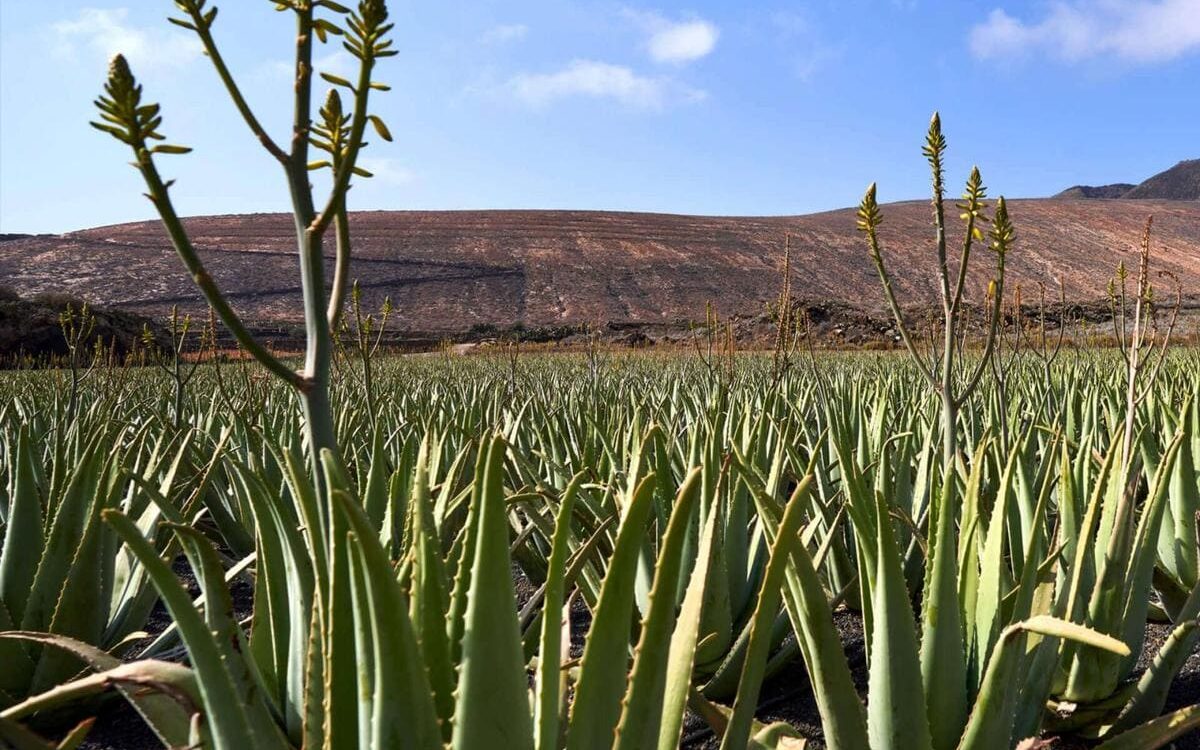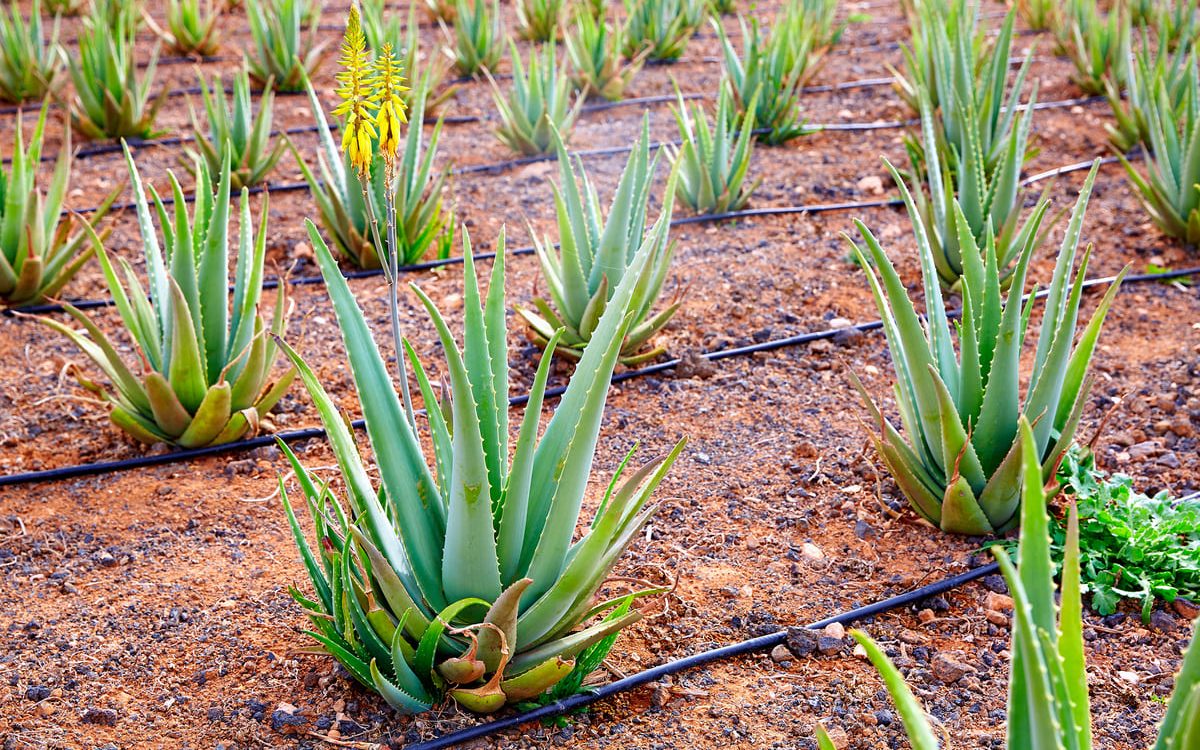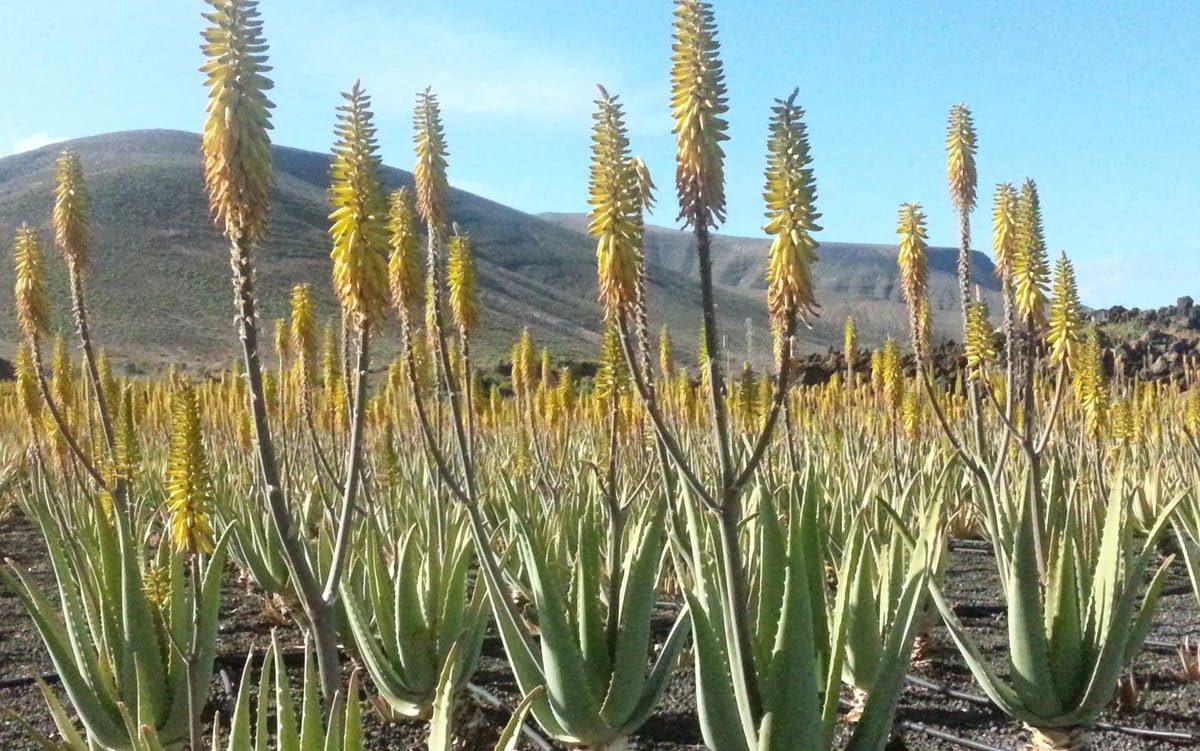Canary aloe vera is a plant with large, fleshy leaves and a multitude of healing properties, which were already known to the aborigines of the Canary Islands. This plant grows naturally in the Archipelago and is the first region in Europe in its production. Today it is cultivated in several countries for its cosmetic use.
What is canary aloe vera
It is a perennial plant that can reach up to three meters in height. It has a rosette of leaves and inside it has a long rhizome (horizontal and subway stem) and a short stem. The leaves are succulent and green, lance-shaped, and the edges with separate spiny teeth. They measure on average between 30 and 60 centimeters long and between 5 and 8 centimeters wide. Reproduction can be either sexual, in this case by means of flowers, or asexual, through a shoot, offshoot or stem that is born from an adult specimen.

Aloe distribution
Aloe vera comes from North and East Africa and Arabia and is widely distributed in the Canary Islands, where it is grown mainly in Lanzarote, Gran Canaria and Fuerteventura. Products made from the plants from these islands are considered to be of high quality.

In order for aloe vera to develop optimally, it needs soils with a certain level of acidity, fresh, deep and that do not become waterlogged. To a large extent and in order to supply the cosmetic industry, it is also cultivated in other countries such as Australia, Bangladesh, Cuba, Dominican Republic, China, Mexico, India, Jamaica, Kenya, Tanzania, South Africa and the United States.
One plant, a multitude of uses and properties
The Canary aloe vera and the one cultivated in any part of the world, is a plant with great healing properties that were already known by the aborigines in the Canary Islands. The use of aloe can be summarized in the following list: skin healing, natural antiseptic, antiallergic, digestive and anti-inflammatory; so it is used, to give some examples, for burns, dermatitis, acne, colds, constipation or joint and muscle pain. In addition, it has a high level of nutrients, vitamins, minerals and sugars. But the industry that is making the most of this species is undoubtedly the cosmetics industry. In the case of domestic use, it should be taken into account that direct use can cause irritation and allergic reactions.

The plant used by Columbus
Christopher Columbus took with him a large number of canary aloe vera plants as a cure for the needs of the crew on his voyage in search of the new route to the Indies and where he finally found the American continent. In America this plant species settled and expanded widely and rapidly. There is even an expression that comes from aloe, "canary ointment", to refer to "miraculous remedy".

If you are interested in learning more about Canarian products, native and cultivated in the land, as well as their use and exploitation both in the kitchen and outside it, we leave you below several articles that may interest you : The ancient potatoes of the Canary Islands; Chorizo de Teror, the most famous sausage of the Canary Islands; The Canarian hot pepper, a fundamental ingredient.
Paula Vera
Photos: agroaldea.es, holaislascanarias.com, percan.es



